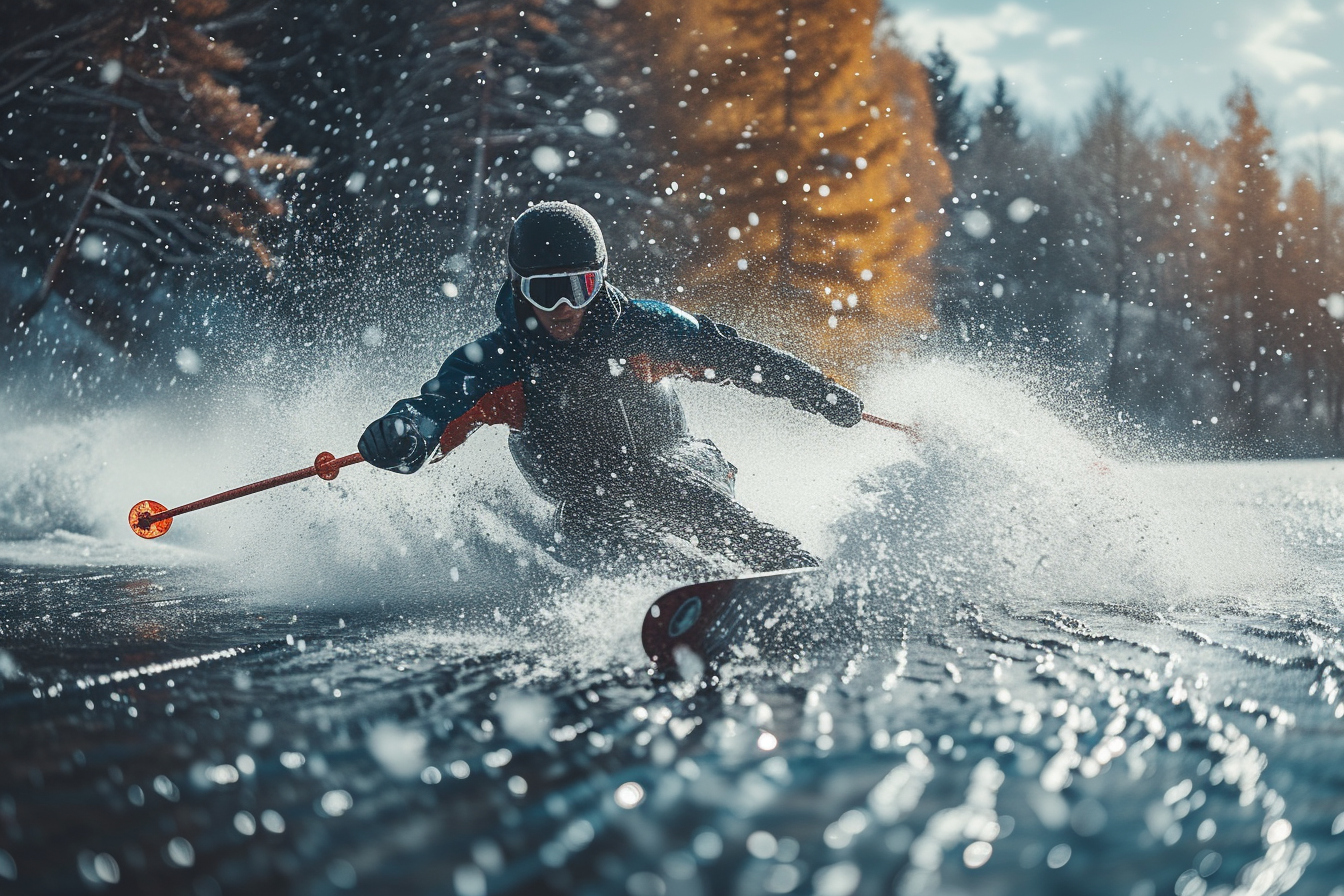Water skiing combines the thrill of surfing the waves with the excitement of speed – a perfect venture for thrill-seekers looking to glide on water. If you’re new to the sport, getting started can seem daunting. Yet, with the right approach, you can quickly find yourself enjoying the rush of skimming across the surface of the water.
Understanding the basics of water skiing
Before diving into water skiing, familiarize yourself with the basic concepts and equipment. This exhilarating sport requires a pair of skis, a tow boat with a tow rope, a PFD (personal flotation device), and of course, water—preferably a calm lake or a coastline with minimal waves.
Selecting the Right Gear and Equipment
When choosing equipment, ensure it suits your body weight and skill level. Beginners should opt for wider, longer skis that offer better stability and make it easier to start. As your skills improve, you can transition to shorter, narrower skis which allow for greater maneuverability.
Preparation: the key to success
Preparing the body and mind is crucial for any physical activity, and water skiing is no exception. Strengthen your muscles and enhance your flexibility with regular exercise and stretching, focusing on the core, legs, and arms, to ensure you have the stamina and strength crucial for water skiing.
Familiarizing Yourself with Safety Measures
Safety must be a priority. Always wear a correctly fitted PFD and learn basic hand signals to communicate with the boat driver. Understand local water safety rules and regulations. Never ski in restricted areas and always have a spotter aboard the boat to keep an eye on you while you ski.
Basic techniques: getting onto the skis
Standing up on water skis is the first challenge novice skiers face, but with a few tips, the process can be much simpler.
Starting Position and Posture
Begin in the water with your skis pointing upwards, and keep your knees bent towards your chest. Grip the tow rope handle firmly, keeping it between your skis. As the boat starts to pull you, resist the urge to lean forward too soon. Stay crouched until you feel enough momentum to stand up.
Mastering the take-off
The key to a smooth take-off lies in letting the boat do the work. Maintain a steady, low center of gravity, and as the boat accelerates, allow your body to rise naturally, using your legs as shock absorbers.
Control on the water
Once on your feet, it’s all about balance and control. Stand tall, knees slightly bent, and arms straight, keeping the rope snug, not taut. Your eyes should be looking forward, not down at the skis, to help maintain your balance.
Steering and turns
Steering and turning come next. Apply slight pressure to the inside edge of the ski on the side you wish to turn. For instance, pressing down on the left ski’s edge will make you turn left. Subtle movements are key – overdoing it might cause you to lose balance.
Building confidence through practice
Confidence on the water grows with each practice session. Try to ski in different water conditions to become adaptable and learn the feel for how the skis move with the water. Constant practice reinforces muscle memory, crucial for progressing in water skiing.
Basic skills progression
Progress in water skiing doesn’t happen overnight – it entails building basic skills one at a time. Start with straight runs before attempting turns. Once comfortable, practice crossing the boat’s wake, initially at slow speeds, and then gradually increasing your speed and confidence.
Developing endurance and skill
As you spend more time on the water, strive to enhance your endurance and skill. Longer sessions will aid in muscle conditioning, and you’ll learn to conserve energy by skiing more efficiently. A blend of endurance, strength, and technique will elevate your experience.
Learning from mistakes
Like any sport, water skiing involves a learning curve peppered with falls and mistakes. Analyze why you fall and take those insights into your next attempt. This reflective learning helps you adjust your technique and improve faster.
Professional instruction: a worthwhile investment
While self-taught methods can work, investing in professional instruction can be extraordinarily beneficial. A certified instructor will provide hands-on guidance, ensuring you develop correct techniques from the start and helping you to progress safely and efficiently.
Joining a water skiing community
Immersion in a community of water skiers adds an invaluable dimension to your learning curve. Camaraderie among skiers encourages learning, and observing others can impart nuances not easily gleaned from text or one-on-one coaching.
Enjoyment: the essence of water skiing
Remember to relish every moment on the water. Enjoyment is the essence that fuels passion and drives improvement. Aim to finish each session with a sense of accomplishment and eagerness for the next outing.
To embark on your water skiing journey, take these essential steps to heart. Gather the necessary gear, focus on safety, master the basic techniques, and indulge in practice with a mindset geared towards growth and enjoyment. While this article has touched on pivotal aspects to help beginners hit the water with confidence, the real learning happens with skis on and tow rope in hand, as the boat waits to trail you across the shimmering expanse. Water skiing is not just a sport, it’s a captivating adventure that beckons you to make a splash.











